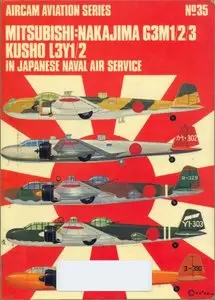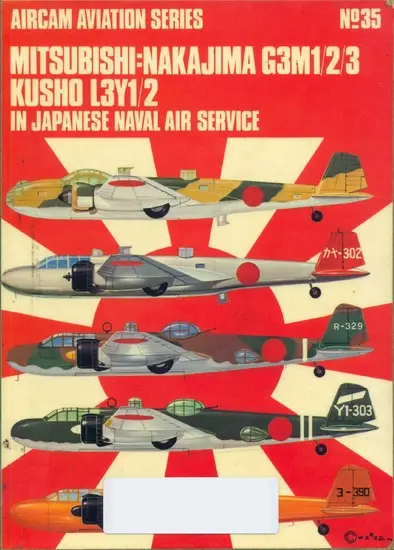Mitsubishi Nakajima G3M1/2/3 Rikko L3Y1/2 in Japanese Naval Air Service (Aircam Aviation 35) By Richard M. Bueschel
Publisher: Osprey 1973 | 50 Pages | ISBN: 0850451361 | PDF | 23 MB
Publisher: Osprey 1973 | 50 Pages | ISBN: 0850451361 | PDF | 23 MB
Capt. Kameo Sonokawa glanced at his watch. Almost nine o'clock. It had been a long and frustrating morning. Lifting from their airfields at Thudaumot and Soctrang near Saigon at sunrise on 10 December 1941, the twin-engined Mitsubishi G3M2 Models 21 and 22 high-level torpedo-bombers of the Mihoro and Genzan Naval Air Corps of the Imperial Japanese Navy's 22nd Air Flotilla, 11th Air Fleet, as well as torpedo-equipped models of the newer Mitsubishi G4M1 bombers of the Kanoya Naval Air Corps, had fruitlessly searched for "Force Z". Made up of the British batdeships H.M.S. Repulse and H.M.S. Prince of Wales, and supported by the four destroyers H.M.S. Electra, H.M.S. Express, H.M.S. Tenedos and H.M.A.S. Vampire, "Force Z" was the strongest surface fleet in Malayan waters. It gave the British defenders command of their shorelines, and provided the mobility to strike at any potential invasion landing points at will. This British force was recognised as the greatest single threat to Japan's Malayan invasion plans, and would therefore be the decisive factor in the campaign. Imperial Headquarters in Tokyo was prepared for any eventuality, and had an alternative plan ready for immediate execution. In the event the going got too tough, the invading Imperial Japanese Army would retreat to the beaches 'to be picked up by the Imperial Japanese Navy, resisting British surface fleet attacks to the best of their ability under cover of Japanese Army and Navy aircraft flying from safe bases in Thailand and French Indo-China. The full weight of Japanese offensive power would then be thrown at the Philippines, to return to Malaya another day.



